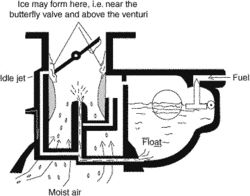A
Aquila2009
Guest
I was flying my Rv-8 with a lycoming 320 in deteriorating conditions, low clouds, rain, almost freezing... and finally climbed confessed and picked up an IFR clearance. I was in IMC, with the temperature at about 30-32 degrees and worried about picking up structural ice.
Next thing I know my low egt alarms are going off, I’m losing power and I can’t get it back. I’ve got full throttle, full rich, and the carb heat has been on. I eventually land safely in a field by the grace of God.
I suspect carb icing but I don’t know what I did wrong. I had the carb heat on almost the entire last 20 min of the flight. I don’t remember it exactly but the carb inlet temp was well above freezing.
I’m nervous now to fly IMC that the engines going to ice over. What did I do wrong or what can I do in the future to minimize that risk?
Next thing I know my low egt alarms are going off, I’m losing power and I can’t get it back. I’ve got full throttle, full rich, and the carb heat has been on. I eventually land safely in a field by the grace of God.
I suspect carb icing but I don’t know what I did wrong. I had the carb heat on almost the entire last 20 min of the flight. I don’t remember it exactly but the carb inlet temp was well above freezing.
I’m nervous now to fly IMC that the engines going to ice over. What did I do wrong or what can I do in the future to minimize that risk?

